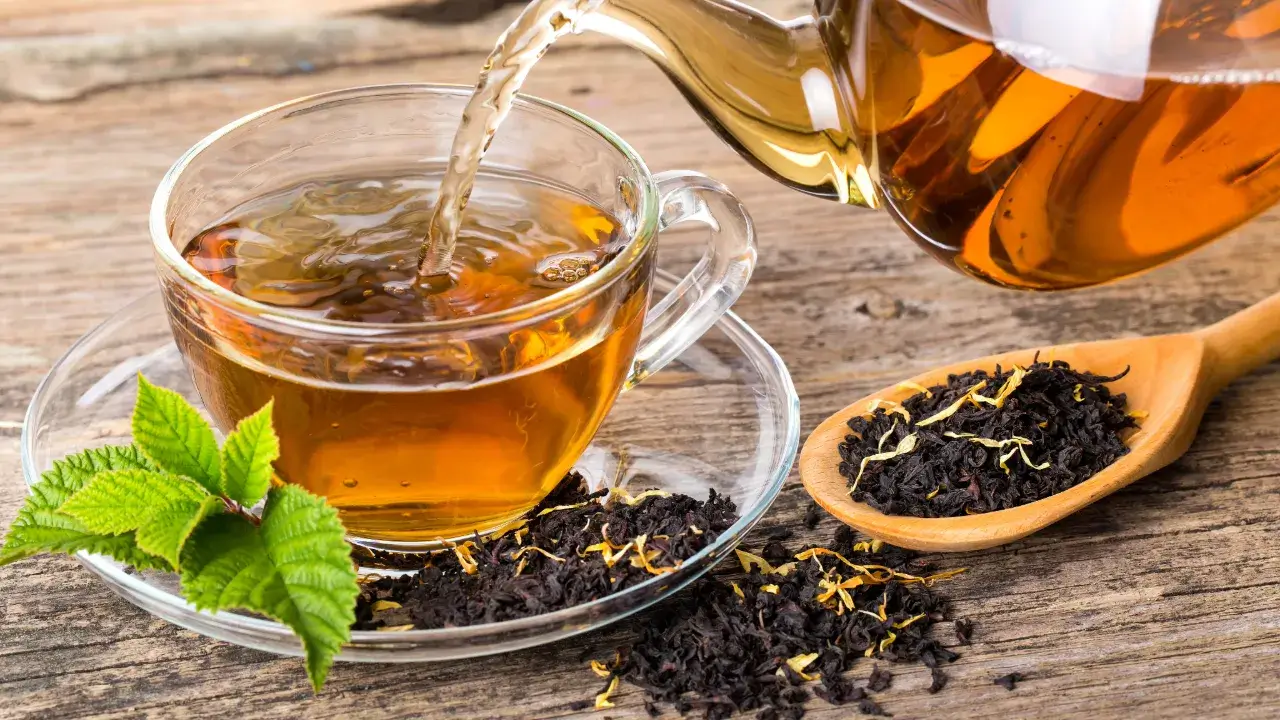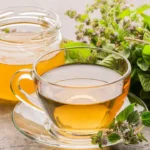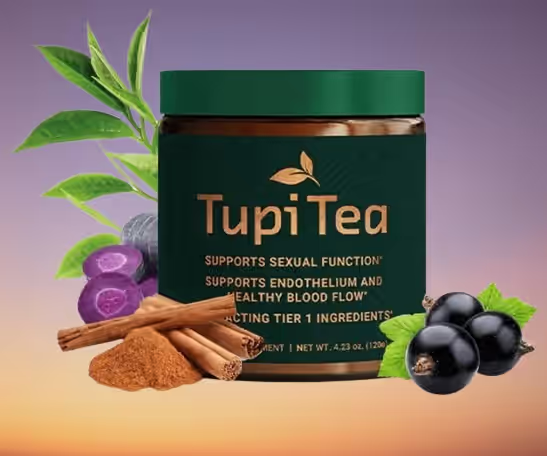Table of Contents
Introduction: Why Compare Spearmint Tea vs Peppermint Tea?
When it comes to choosing the perfect herbal tea, the debate often narrows down to two popular contenders: spearmint and peppermint. Both are beloved for their refreshing flavors and soothing properties, but understanding the nuances between them can elevate your tea experience. So why should you compare spearmint tea and peppermint tea?
Firstly, examining the benefits of each can guide you in selecting a mint tea that aligns with your health goals. Spearmint is known for its calming effects and potential to aid digestion, making it an excellent choice for those seeking relaxation or relief from digestive discomfort. On the other hand, peppermint is celebrated for its invigorating aroma and ability to alleviate headaches and sinus issues.
Moreover, comparing these two types of mint teas allows you to appreciate their unique flavor profiles. Spearmint offers a mild sweetness that pairs well with a variety of dishes, while peppermint delivers a bold, crisp taste that can stand alone or complement desserts beautifully.
Choosing between spearmint and peppermint isn’t just about preference; it’s about tailoring your herbal tea experience to meet your specific needs. By understanding the distinct benefits each offers, you can make an informed decision that enhances both your wellbeing and culinary enjoyment.
The Origins and Characteristics of Spearmint and Peppermint
When it comes to the refreshing world of mints, spearmint and peppermint stand out as two of the most popular and versatile members of the mint family. Understanding their origins and characteristics not only enhances our appreciation for these aromatic plants but also highlights their unique benefits.
Spearmint Plant
The spearmint plant, known scientifically as Mentha spicata, is native to Europe and Asia. It has been cherished for centuries for its mild, sweet flavor that makes it a favorite in culinary dishes and herbal teas. The origin of spearmint tea dates back to ancient civilizations where it was used not just for its delightful taste but also for its soothing properties.
Peppermint Plant
On the other hand, peppermint (Mentha × piperita) is a hybrid mint—a cross between watermint and spearmint—originating from Europe and the Middle East. Peppermint is renowned for its strong menthol aroma which gives it a more intense flavor compared to spearmint. This potency makes peppermint an excellent choice for medicinal uses, such as alleviating digestive issues or providing relief from headaches.
Mint Family
Both plants belong to the diverse mint family, yet they offer distinct experiences whether consumed fresh or in various products like teas, candies, or essential oils. While they share some common traits like vibrant green leaves and invigorating scents, their differences are what make them uniquely valuable in both culinary arts and natural remedies.
Summary Comparison
| Feature | Spearmint | Peppermint |
|---|---|---|
| Flavor | Mild, sweet | Bold, crisp |
| Aroma | Light and sweet | Strong menthol aroma |
| Origin | Europe & Asia | Europe & Middle East |
| Primary Use | Calming, digestive aid | Headache relief, invigorating |
| Culinary Use | Pairs well with a variety of dishes | Complements desserts, stand-alone tea |
Incorporating these mints into your lifestyle can be incredibly rewarding—spearmint with its gentle sweetness perfect for everyday relaxation through teas; peppermint with its boldness ideal for those moments when you need that extra kick of freshness or relief. Embrace both varieties as part of your herbal repertoire and enjoy all that these remarkable plants have to offer!
👉 Sip the Best Mint Tea for Ultimate Refreshment! 👈
Taste Profile: What Sets Spearmint Apart from Peppermint?

Flavor Difference Between Spearmint and Peppermint
When it comes to mint, the flavor difference between spearmint and peppermint is both subtle and profound, offering unique tasting experiences that cater to different palates. Understanding these nuances can elevate your appreciation for mint teas and culinary uses.
How Does Spearmint Taste?
Spearmint boasts a mild, sweet flavor profile that many find refreshing yet gentle. Its taste is often described as cool and smooth, with a hint of sweetness that makes it an ideal choice for those who prefer a subtler minty experience. The low menthol content in spearmint—around 0.5%—contributes to its softer taste, making it perfect for blending in teas where you want the mint to complement rather than dominate other flavors.
How Does Peppermint Taste?
In contrast, peppermint packs a more robust punch with its intense menthol presence of about 40%. This gives peppermint its characteristic boldness, delivering an invigoratingly sharp and cooling sensation on the palate. Peppermint’s assertive flavor makes it a favorite in strong herbal teas or recipes where a pronounced minty kick is desired.
Tasting Notes for Mint Teas
So how does spearmint taste compared to peppermint? Here’s a quick comparison:
- Spearmint: Delicate, subtle, cool, and smooth.
- Peppermint: Bold, crisp, intense, and invigorating.
If you’re seeking something delicate that whispers rather than shouts, spearmint is your go-to choice. But if you’re after an unmistakable burst of freshness that awakens the senses, peppermint stands unrivaled.
Exploring these tasting notes for mint teas can transform your tea-drinking rituals into sophisticated sensory journeys. Whether you wish to indulge in the soothing embrace of spearmint or revel in the vibrant zest of peppermint, each offers distinct pleasures waiting to be discovered.
Health Benefits of Drinking Spearmint Tea
Hormone Balance with Spearmint Tea
When it comes to enjoying a soothing cup of tea, spearmint tea offers more than just a refreshing taste—it provides a plethora of health benefits that can significantly enhance your well-being. One of the standout advantages of spearmint tea is its ability to support hormone balance. Studies have shown that regular consumption can help regulate hormones, particularly in women suffering from polycystic ovary syndrome (PCOS), by reducing elevated testosterone levels and improving overall hormonal harmony.
Antioxidant Properties of Spearmint
In addition to promoting hormone balance, spearmint tea is renowned for its powerful antioxidant properties. These antioxidants play a crucial role in fighting free radicals in the body, which are responsible for cellular damage and aging. By incorporating spearmint tea into your daily routine, you’re not only indulging in a delightful beverage but also fortifying your body’s natural defenses against oxidative stress.
The health benefits of drinking spearmint tea extend beyond these highlights. It’s time to consider making this invigorating drink a staple in your diet—not just for its flavor but for the myriad ways it supports and enhances your health. With each sip, you’re investing in a healthier future, one cup at a time.
👉 Discover Top Quality Mint Tea Today! 👈
The Powerful Health Advantages of Peppermint Tea
Digestive Aid Peppermint Tea
Peppermint tea is more than just a refreshing beverage; it’s a powerhouse of health benefits that can transform your well-being. One of the most compelling advantages is its role as a digestive aid. After a heavy meal, sipping on peppermint tea can help relax the digestive system, alleviate bloating, and reduce gas, making it an excellent choice for those seeking natural relief from digestive discomfort.
Headache Relief with Peppermint Tea
But the benefits don’t stop there. Peppermint tea is also renowned for its ability to provide headache relief. The menthol present in peppermint has muscle relaxant properties that can ease tension headaches and migraines. By simply inhaling the soothing aroma or drinking this herbal infusion, you may find significant alleviation from persistent headaches without relying heavily on over-the-counter medications.
Quick Comparison of Health Benefits
| Health Benefit | Spearmint Tea | Peppermint Tea |
|---|---|---|
| Hormone Balance | Supports hormone regulation, especially in PCOS | Not specifically known for hormone regulation |
| Antioxidant Properties | Strong antioxidants for cellular health | Moderate antioxidant properties |
| Digestive Aid | Mild digestive support | Strong digestive support, especially after meals |
| Headache Relief | Not widely recognized for headaches | Effective for tension headaches and migraines |
Incorporating peppermint tea into your daily routine could be one of the simplest yet most effective steps toward improving your health naturally. With its dual action as both a digestive aid and headache remedy, it’s no wonder this delightful brew has been cherished for centuries across cultures worldwide.
Caffeine Content in Mint Teas: What You Need to Know

When it comes to enjoying a soothing cup of mint tea, many tea enthusiasts often wonder about its caffeine content. Understanding whether your favorite spearmint or peppermint tea contains caffeine is essential, especially if you’re looking to reduce your intake or enjoy a calming beverage before bed.
Caffeine-Free Herbal Teas
The good news is that most mint teas are naturally caffeine-free herbal teas. Unlike traditional black or green teas, which are derived from the Camellia sinensis plant and contain varying levels of caffeine, mint teas are made from the leaves of the peppermint or spearmint plants. These plants do not naturally produce caffeine, making them an excellent choice for those seeking a relaxing and invigorating drink without the stimulating effects.
Caffeine Content in Mint Teas
However, it’s important to note that some commercially available mint tea blends might include caffeinated ingredients. Always check the label if you’re purchasing pre-packaged tea blends to ensure they meet your dietary preferences. By opting for pure peppermint or spearmint teas, you can confidently enjoy their refreshing taste without worrying about unwanted caffeine content.
In conclusion, if you’re searching for a delightful and calming beverage option free from caffeine’s jittery effects, look no further than pure mint teas. Embrace the natural goodness of these herbal infusions and savor each sip with peace of mind.
👉 Enjoy the Ultimate Mint Tea Experience – Order Now! 👈
Brew the Perfect Cup: Tips for Making Delicious Mint Teas at Home
Homemade Mint Infusion Recipes
If you’re looking to elevate your tea game, mastering the art of brewing mint tea at home is a delightful place to start. Mint tea, with its refreshing aroma and soothing properties, can be the perfect companion for any time of day. Here are some convincing tips on how to brew mint tea that will transform your kitchen into a personal oasis.
- Select Fresh Mint Leaves: Fresh leaves provide a vibrant flavor that dried ones simply can’t match. Gently crush the leaves between your fingers to release their essential oils before adding them to hot water.
- Choose the Right Water Temperature: Avoid boiling water; aim for around 190°F (just below boiling). This ensures that you extract all the delicate flavors without any bitterness.
- Steep for the Right Amount of Time: Let your mint leaves infuse for about five minutes. This duration allows you to capture the full essence of the herb while maintaining a smooth taste profile.
For those who enjoy experimenting, consider adding complementary ingredients such as honey or lemon slices to enhance your brew’s natural sweetness or add a zesty kick.
First and foremost, selecting fresh mint leaves is crucial. Fresh leaves provide a vibrant flavor that dried ones simply can’t match. When preparing your homemade mint infusion recipes, gently crush the leaves between your fingers to release their essential oils before adding them to hot water.
Brewing Tips for Herbal Teas
The temperature of the water is another vital factor in brewing tips for herbal teas. For mint tea, avoid boiling water; instead, aim for around 190°F (just below boiling). This ensures that you extract all the delicate flavors without any bitterness.
Steeping time is key—let your mint leaves infuse for about five minutes. This duration allows you to capture the full essence of the herb while maintaining a smooth taste profile.
For those who enjoy experimenting, consider adding complementary ingredients such as honey or lemon slices to enhance your brew’s natural sweetness or add a zesty kick.
By following these simple yet effective strategies on how to brew mint tea, you’ll be able to craft a cup that’s not only delicious but also tailored perfectly to your taste preferences. So go ahead and indulge in this aromatic ritual; it’s more than just making tea—it’s creating an experience!
Conclusion: Which Mint Tea Should You Choose? Your Path to Refreshment Awaits!
When it comes to selecting the perfect mint tea, the choice ultimately depends on your personal preferences and desired benefits. If you’re seeking a classic, refreshing experience, peppermint tea is an excellent option with its bold flavor and invigorating aroma. For those who prefer a milder taste with soothing qualities, spearmint tea offers a gentle sweetness that calms the senses.
If you’re looking for something unique, consider exploring blends that incorporate other herbs or flavors alongside mint. These can provide delightful surprises and enhance your tea-drinking experience with additional layers of complexity.
Remember, the best mint tea for you is one that aligns with your taste buds and wellness goals. Whether you enjoy it hot or iced, in solitude or shared with friends, let each sip transport you to a state of relaxation and refreshment. Your path to discovering the ideal mint tea awaits—embrace it with an open mind and enjoy every moment of this aromatic journey!














